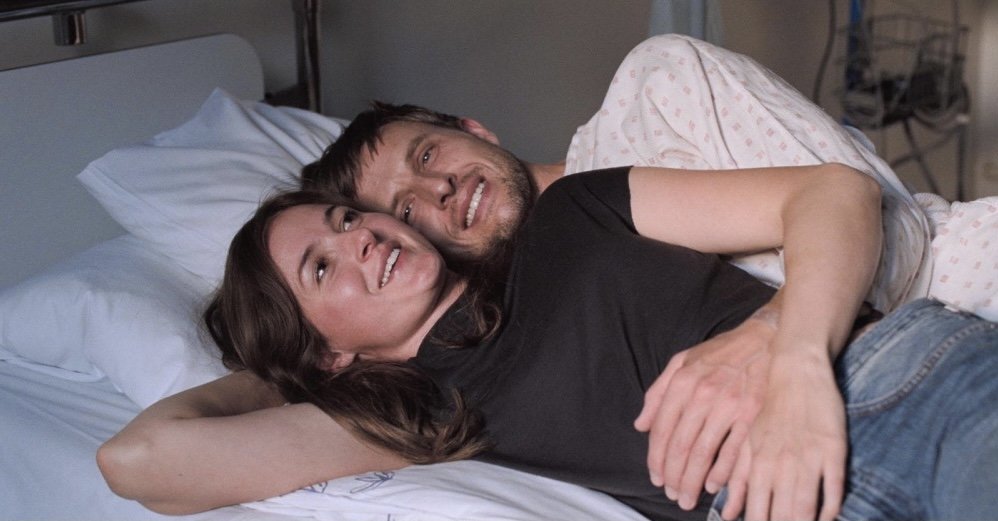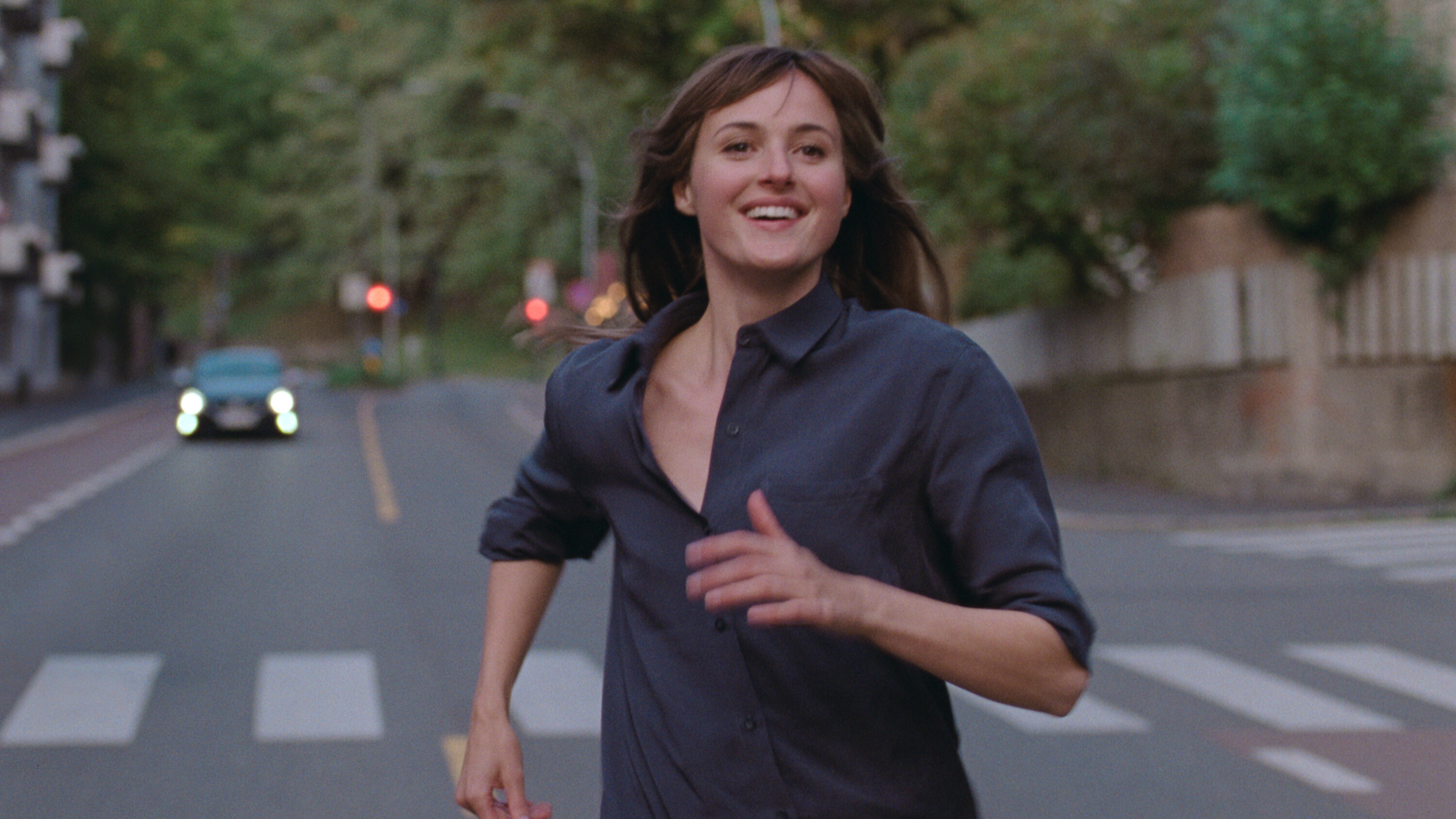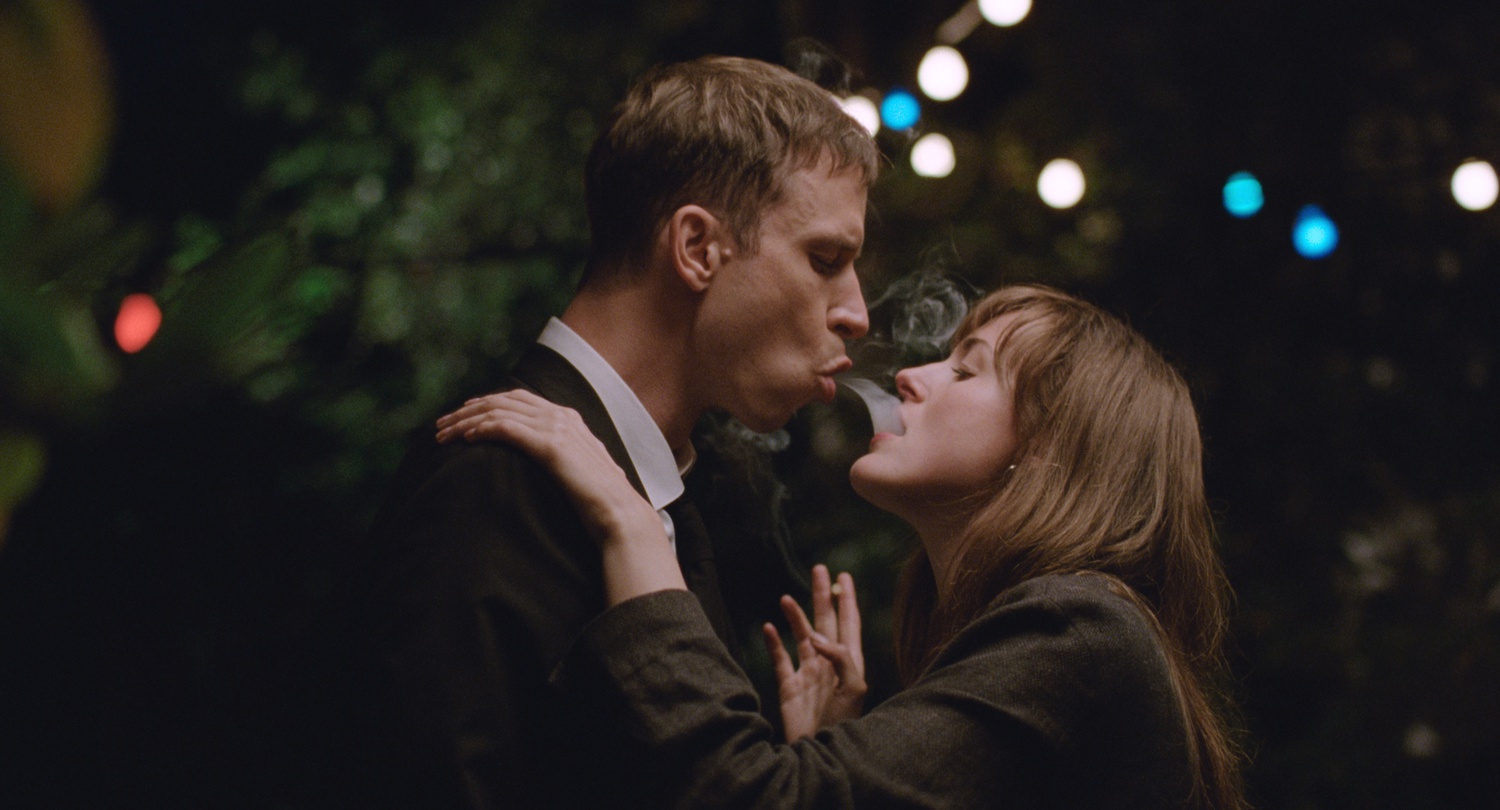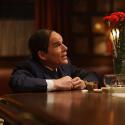Some British TV viewers who were in junior school in the mid-1960s will recall the imported Australian kids’ show The Magic Boomerang. When the adolescent hero, a sheep farm kid, threw the eponymous piece of wood, he stopped time and was able to thwart crimes and right other wrongs as long as it was airborne; once he caught it, life continued as before in his corner of the Outback.
Unequipped with an Aboriginal hunting weapon, Julie (Renate Reinsve) in The Worst Person in the World wills time to stop so she can run across Oslo, passing freeze-framed foot and road traffic, to start a passionate new relationship.
Julie has just turned 30. These millennials with their sense of entitlement, tech savvy, and bucket lists. Their metaphysical hocus pocus. What can’t they do or have?
Created with clever staging and cinematography on location rather than with CGI, the magical realist sequence is the most ecstatic and talked about in the fifth fiction film directed by Joachim Trier and co-written by him and Eskil Vogt. (Pictured below: Renate Reinsve and Anders Danielsen Lie)
 In retrospect, it’s also an ironic sequence. As with the the boomerang boy, Julie's life continues as before: she's still lost.
In retrospect, it’s also an ironic sequence. As with the the boomerang boy, Julie's life continues as before: she's still lost.
Her abandonment of her live-in boyfriend, the thorny comic book artist Aksel (Anders Danielsen Lie), who’s 14 years her senior, for the teddy bearish barista Elvind (Herbert Nordrum), himself 30ish and with girlfriend, is impulsive. Her obeying desire is less the issue – who are we to judge? – than her lack of self-knowledge. The piper will need to be paid, and Trier and Vogt contrived that the payment should be brutally guilt-making.
Julie is not discernibly neurotic. More than averagely intelligent, intellectual, talented, insightful, sharp-witted, charming, zestful, ambitious, beautiful, fierce when required – and yet not insufferable, but likable – she can change her situation, but she can't curb her tendency to self-sabotage, yet. Barely aware of her chronic existential crisis, Julie doesn’t know what she wants to do, who she wants to be, who she wants to be with, or what she wants from a relationship.
Her only certainties are that she doesn’t want to settle for middle-aged bourgeois conformity – a legacy of vacationing with Aksel’s family and friends – and that she’s not ready to be a mother. She is admirably progressive, and progressing nowhere.
The Worst Person in the World is arranged in Godardian chapters. A droll flashback montage shows Julie – to her single mother’s increasing concern – mercurially switching from medicine to psychology at university, then working, quite successfully, as a photographer, laying the groundwork for the mindless job she takes in a chain bookshop.
In her indecisiveness and faddishness, she’s a spiritual sister of aimless 24-year-old Bethany in William Boyd’s 2017 story The Dreams of Bethany Mellmoth. The point in both cases is that some millennials, faced with more choices and privileges than young people of preceding generations, are paralysed by them. In another imaginative montage timed to Julie’s 30th birthday, she assesses her female family forebears and realizes that, the further back in time they lived, the less opportunities they had, the earliest of them confronted by young motherhood and short life spans. That Julie has it all avails her nothing.
Romantic instability is not a generational hex, of course, but usually a psychological curse. A visit she and Aksel make to her neglectful father and his second wife offers some clues. He is a feckless, narcissistic hypochondriac, who favors Julie’s sporty teenage stepsister. (Pictured below: Reinsve as Julia, having stopped time)
 It’s no wonder that the caring men Julie gets involved with disappoint her. Shortly after she moves in with the kindly Elvind, he stumbles on and reads a think-piece about oral sex she has written and discarded. (Reinsve delights in Trier and Vogt’s implicit attack on wokeness.) Whereas she was pleased Aksel liked her writing, Elvind’s praise causes her to sneer at him – she considers him intellectually her inferior – which naturally hurts his feelings. In its destructiveness, redolent of her unhappiness, that sneer is really self-directed.
It’s no wonder that the caring men Julie gets involved with disappoint her. Shortly after she moves in with the kindly Elvind, he stumbles on and reads a think-piece about oral sex she has written and discarded. (Reinsve delights in Trier and Vogt’s implicit attack on wokeness.) Whereas she was pleased Aksel liked her writing, Elvind’s praise causes her to sneer at him – she considers him intellectually her inferior – which naturally hurts his feelings. In its destructiveness, redolent of her unhappiness, that sneer is really self-directed.
Whither Julie after that? Trier and Vogt set her up for not one, but two chastening experiences, as Hardy-esque fate kicks in. Whether she deserves them is a moral question beyond this critique’s purview.
At which point, we will freeze it to consider Renate Reinsve, whom The Worst Person in the World has launched to deserved stardom. The film is the third in Trier’s “Oslo Trilogy” following Reprise (2006), a light but angsty drama about aspiring writers, and Oslo, August 31st (2011), a suspenseful drama about a recovering addict. (Anders Danielsen Lie starred in both.) In the latter film, Reinsve had a bit part and a single line – “Let’s go the party!” – but spent nine days on set and got to know Trier.
During subsequent conversations, apparently of an “existential nature,” at Oslo get-togethers, Trier told Reinsve, who had continued to work in TV series and movies made for the Norwegian domestic market, that she should play a lead in a film. The upshot was that he and Vogt wrote The Worst Person in the World for her. Her performance deservedly won her the Best Actress award at last May’s Cannes festival, and a BAFTA-nomination followed.
Though Reinsve was overlooked as a Best Actress candidate by blinkered Oscar voters, the movie competed for the Best Foreign Language Film award. Reinsve’s co-stars are note-perfect – Lie has unusual gravitas – but it’s she who carries and energizes the movie. She is fabulous and her star wattage dazzling, but should she be so consistently appealing registering confusion and disarray? Joachim’s direction is elegant and playful, but his adoring gaze might be problematic for some viewers. As he is to Hardy in this respect, Julie is to Tess Durbeyfield. (Pictured below: Nordrum and Reinsve)
 Now where were we? There's a subtler sequence in the film than the one that allows Julie to stop time. Attending a book-signing party thrown for one of Aksel’s anthropomorphic Bobcat comics, she experiences a wave of discontent seemingly attributable to her inability to fulfil herself and need for affirmation from Aksel that he’s not always present to give.
Now where were we? There's a subtler sequence in the film than the one that allows Julie to stop time. Attending a book-signing party thrown for one of Aksel’s anthropomorphic Bobcat comics, she experiences a wave of discontent seemingly attributable to her inability to fulfil herself and need for affirmation from Aksel that he’s not always present to give.
Finding him surrounded by fanboys, Julie tells him she’s going home, exits the building, which is across from the palatial Havnelageret on the opposite bank of the Oslofjord, and pauses to view the city and the water below her. She then proceeds downhill and, with Julie-like chutzpah, gatecrashes a wedding – and crashes her life.
Should she have stopped time, thrown a metaphorical boomerang, as tears filled her eyes when she was surveying Oslo from the hill (but seeing herself)? I think not. Though Julie didn’t know it at the time, the door that opens on romantic availability had slipped open again. More such doors – including the one teading to selfhood – might need to open and close before she knows who Julie is. And that’s all right.














Add comment